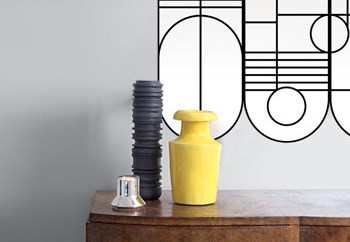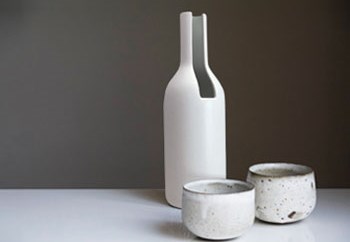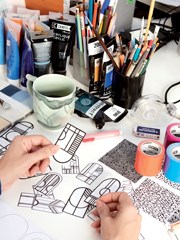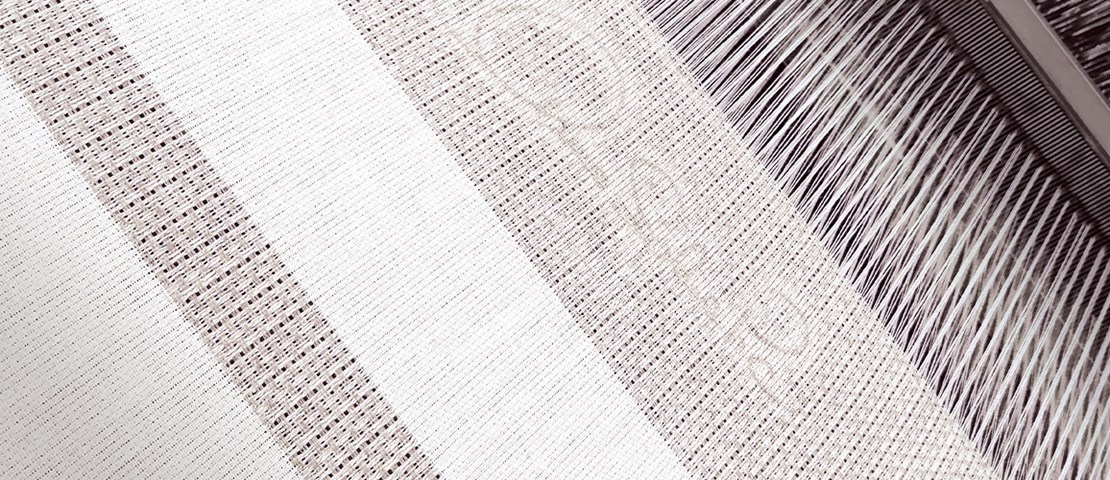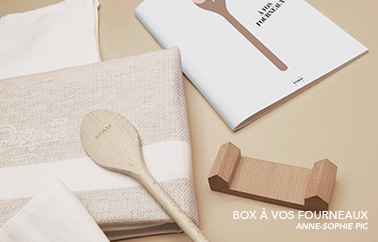Paying homage to the historic Maison Pic, the teams at Le Jacquard Français in partnership with Designerbox have returned the apron the most crucial piece of clothing in the kitchen to its rightful status.Using the neutral white and ecru beloved of chef Anne- Sophie Pic, and working with mixed cottons and complex weaves, Le Jacquard Français has conjured up in textile form all the subtlety of Pic’s unique culinary skills. A brief guide to the stages in the creation of the apron designed by chef Anne-Sophie Pic.Visiting Le Jacquard Français’ spinning mill in the Vosges is a visual spectacle as educational as it is fascinating. Testifying to generations- old skills involving machines and humans working in harmony, the precise ballet that takes place in the factory daily results in the loveliest fabrics and most sophisticated patterns. Walking around, one is most struck by the warping room. For art lovers, the mirages and other optional illusions caused by the many thousands of taut threads may recall certain of Soto’s op art installations.
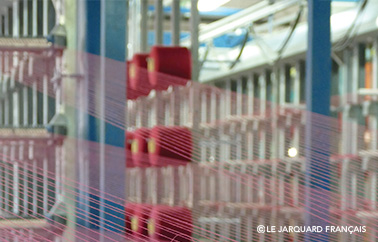
Not content with ravishing the eye, the room also delights the ear with the rhythms and roar of the looms as the fabric finally issues forth, as if by magic, centimetre by centimetre...
THE THREAD
Many threads could be used to create Anne-Sophie Pic’s apron. Le Jacquard Français chose long fibres, which are rarer but guarantee greater strength - important for aprons, which generally need to be laundered often. A white thread for CHAINE and a white and cream thread for TRAME. The thread’s grammage also determines the delicacy of the pattern (or weave) and here also ensures the material’s lightness.
THE WARPING
Warping consists of making hundreds of bobbins of thread into gigantic ‘principal’ spools that feed the looms. For the apron, about 5,400 threads from spools were needed.
THE BONDING
The threads from 10 principal spools are joined and arranged next to each other. The whole is dipped into a bath of starch (potatoes, cornflour) to harden the threads and allow them to better endure the pressures applied to the weave.

THE WEAVING
The spools of warp and the weft bobbins are placed on the looms. The threads interweave in a set order into order to create the desired pattern for the chef's apron.
Each loom weaves about 100 metres of cotton a day.
THE INSPECTION
This is the stage when the fabric, having left the loom, is checked. Every centimetre is studied in order that imperfections be removed or defective spools be rejected. The fabric is inspected on both sides.
THE REFINEMENT
These means all the processes and treatments needed to transform the raw fabric (ie the fabric straight from the loom) into a product ready for use. This step gives it the right texture, dimensional stability and suppleness. The material for the apron went through a series of three treatments; buckling, washing and priming.
THE CREATION
Delivered in a roll, the fabric is cut and sewn to create the final product. Then there’s the addition of the fastenings that allow the apron to be adjusted. During this process, the aprons are individually rechecked to ensure that they are fault-free before being packaged.
Discover the box "À vos fourneaux"


